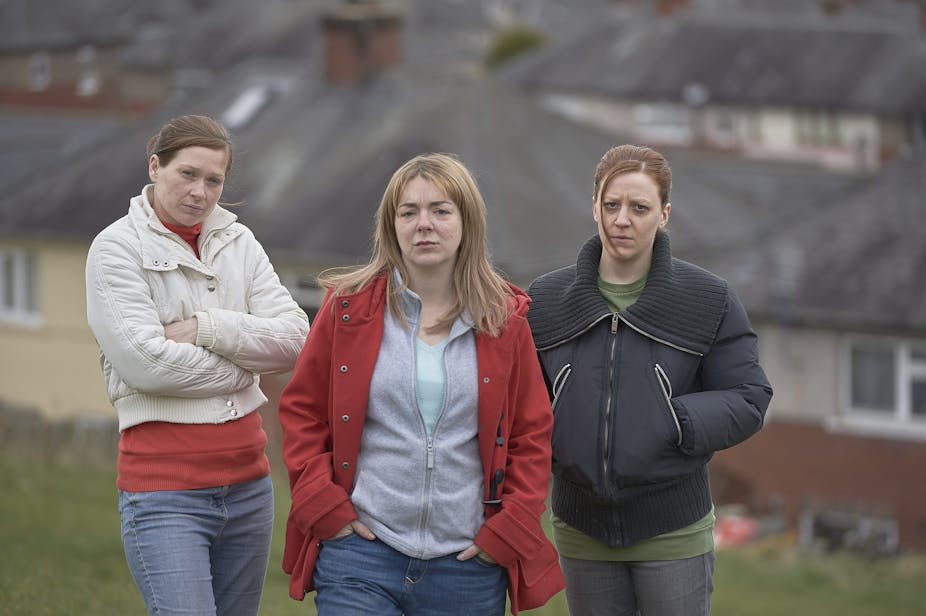It’s fair to say that Moorside, a recent two-part BBC drama which chronicles the notorious kidnapping of nine-year-old Shannon Matthews has raised more than a few eyebrows in Britain.
Critics have claimed it’s too soon for such a programme to be made – Matthews disappeared from a housing estate in Dewsbury, West Yorkshire, in northern England in 2008. Mathews’ own family voiced similar concerns. Shannon’s grandparents spoke out against the programme, saying it is “sick” that their family’s trauma was made into a TV show.
The BBC drama tells the story of how Shannon’s mother, Karen Matthews, together with her boyfriend’s uncle, Michael Donovan, orchestrated Shannon’s disappearance so they could claim the reward money once Donovan had “found” her.
Shannon herself is now living with a new family under a different identity. But there are fears that at only 18-years-old, Shannon might be further traumatised if she were to see the programme. It has been reported that she was warned in advance about the TV drama featuring her ordeal by her social workers.
Public trauma
These anxieties about the possible fallout of the drama may appear overblown to an impartial observer. But their concerns are a testament to the long-lasting and sometimes devastating effects media discourses have on those directly involved in a personal or community tragedy.
Shannon went missing less than a year after the much publicised disappearance of four-year-old Madeleine McCann – who vanished while on holiday with her parents in Portugal. McCann’s parents have also spoken out against the BBC drama, calling it “very insensitive”.
Many comparisons were made between the two cases at the time. Despite the initial similarity in the cases, it was the McCann story that prompted high profile media campaigns across the British tabloid press – “find Madeleine” was on the front pages of many papers for several months. The media coverage of Shannon Matthew’s disappearance, however, was much more subdued. Stories in the broadsheet press questioned the lesser amount of media coverage that her case was attracting. For some it was clearly a class issue.
The McCanns, doctors in Leicestershire, were portrayed as articulate, middle-class professionals. Karen Matthews and her supporters, despite their attempts to engage with the press and create a positive campaign to find Shannon, could not easily escape their working-class origins. This made them less “media friendly”, which led to the public perception that the Moorside estate where Matthews lived was a place where bad things happened.
Media portrayal
It tends to be that when the media is covering a story, almost everyone can fall into a stereotype – if pushed hard enough – be they rich or poor, good or bad, deserving or undeserving. So when the people involved in a story do not fit these roles so well, the media struggles to create an acceptable narrative that conforms to preexisting prejudices.
This is undoubtedly what happened in the case of the Shannon Matthews. For a time coverage tentatively portrayed a downtrodden community coming together in a time of crisis. So, for a short time, at least, the residents of the Moorside were depicted as heroes.
But after the truth of the events came to light, some media outlets claimed to have been suspicious of Karen Matthews’ involvement all along, and rapidly re-positioned both her and the community she came from in terms of accepted social prejudices.

This is the nature of media representation. On a good day it can have the effect of mobilising public support by keeping a story in the public sphere. It can also positively influence police activity and provoke political debate. This is why people at the centre of tragic events seek the support of the media.
But on a bad day it can cause devastation and damage to all involved. Because of this, communities such as Moorside are rightly suspicious about the media. They know exactly how they are typically portrayed in the press and subsequently viewed by the wider public. A view that has been reinforced time and time again.
So when Karen Matthews was found to be involved in her daughter’s disappearance, the public was ready to believe her guilt because she was always guilty of something – being a bad mother, being on benefits, being poor. The headlines are already in place for people like her.
Those depicted in high profile media stories can often come to be defined by the narrative created by the media discourse – for better or for worse. These narratives exist outside of reality because to capture public attention the media must exaggerate the often mundane truth. And in this regard Karen Matthews was, and still is, described as “pure evil” by the police and media – because this narrative is easier to understand than any alternative explanation.
But the impact of this representation is wide ranging – on Matthews herself, who is never allowed to rehabilitate. On a daughter, who may never reconcile with her mother. And on a community, who might question their sense of togetherness for a second time round – after once again finding themselves the centre of attention for all the wrong reasons.

